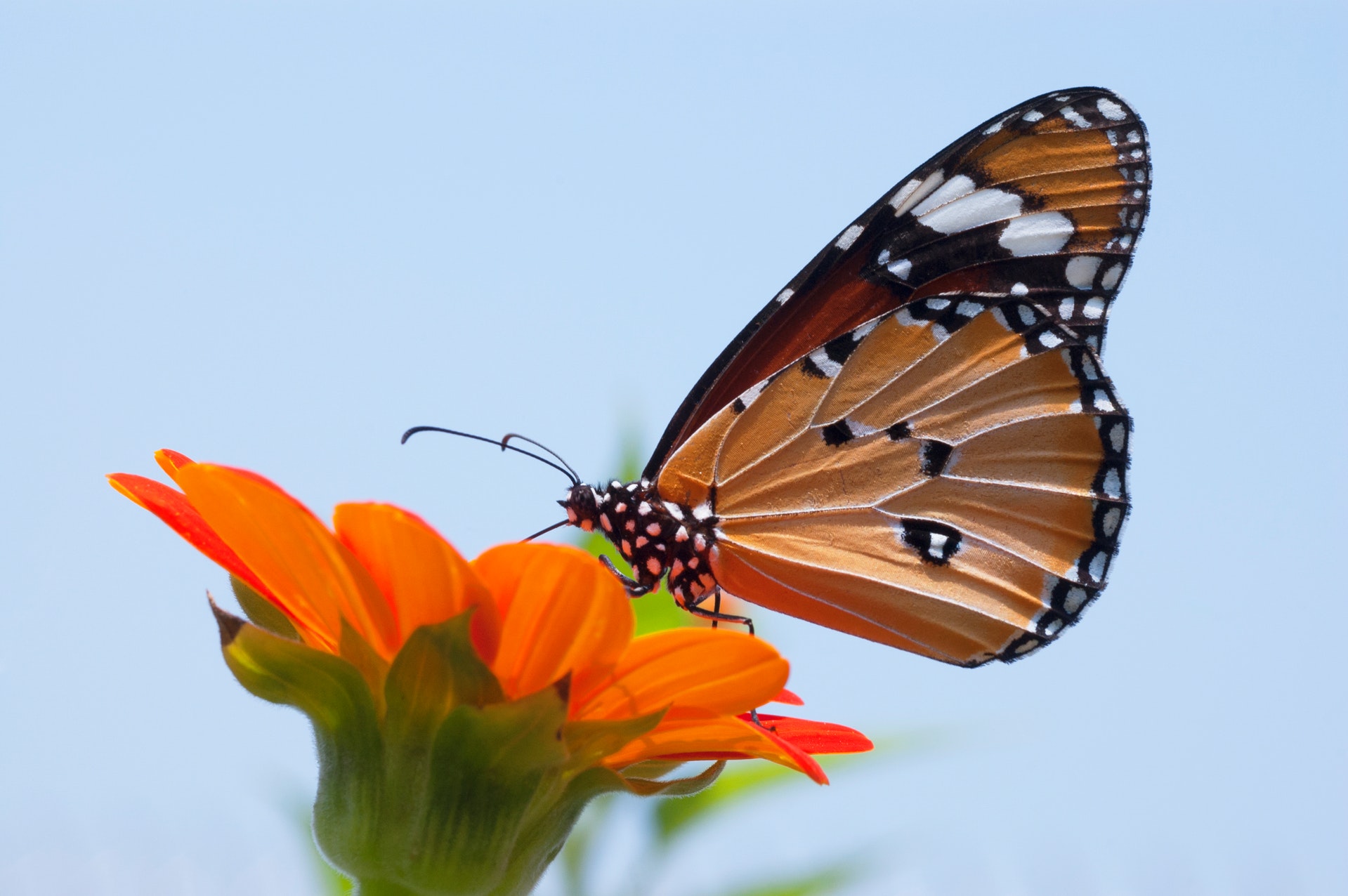Bring your garden to life by transforming it into a haven for butterflies
Attracting butterflies to your garden is a particularly lovely way to ‘go green’. The plants that attract these insects usually bear gorgeous flowers and the resulting influx of delicate, flitting wings brings a new dimension of beauty to your garden. Plus, they also act as pollinators of flowering plants.
YOU’LL ALSO LOVE: Attracting birds to small gardens

The basics of attracting butterflies to your garden
Steve Woodhall, president of the Lepidopterists’ Society of Africa, says that as a general rule, butterflies are attracted to whatever plants are producing nectar at the time. “Red flowers attract swallowtail and brown butterflies, such as Table Mountain beauty. Blue and mauve flowers are great, but yellow flowers are not as good, except for senecio which exudes alkaloids that attract monarch butterflies and friars. Trees with masses of white blossoms, such as Nuxia floribunda, are excellent,” he reveals.
READ MORE: Planting a bee-friendly garden

In addition to nectar-producing flowers to provide food for the adults, you also need to include host plants for the females to lay eggs on, and on which the larvae can feed.
“Planting in groups is best as mass plantings have more chance of attracting butterflies,” says Steve. The area need not be secluded – in fact open, sunny banks are often best.
Plants ideal for any region
- Citrus trees; these host plants attract swallowtails.
- Wild peach (Kiggelaria africana); if you only have space for one tree in your garden, choose this one. It’s a host plant and a huge attractant for the garden acraea butterfly.
- Good nectar-producing plants are creeping foxglove (Asystasia gangetica), clerodendron, geraniums and pelargoniums, vygies, ribbon bush (Hypoestes aristata), scabiosa, buddleja and vernonia.

Plants for Gauteng gardens
- White ironwood (Vepris lanceolata) attracts the two largest butterflies in the area – the green-banded swallowtail and citrus swallowtail. The female lays her eggs on the plant’s leaves.
- Sweet thorn (Acacia karroo) serves two purposes: when in flower, it is a food plant for a few of the smaller butterflies in the region including
- Babul blues and black-striped hairtails and its leaves provide food for many moth larvae.
- Paperbark thorn (A. sieberiana var. woodii) – like the sweet thorn, both its flowers and leaves attract butterflies.
- Spur flowers (Plectranthus spp.) – the garden inspector breeds on the thick-leafed varieties of this group of plants.
- Plumbago is where you’ll find the common zebra blue, a frequently-spotted butterfly in Gauteng.

Plants for KZN gardens
- White ironwood (V. lanceolata) is favoured by the mocker and green-banded swallowtails.
- Horse wood (Clausena anisata) attracts citrus swallowtails.
- Cape ash (Ekebergia capensis) is an evergreen tree that provides food for the larvae of the white-barred charaxes.
- African dog-rose (Xylotheca kraussiana) draws the larvae of the blood-red acraea.
- Dune soapberry (Deinbollia oblongifolia) – several species of butterflies feed on this tree’s leaves.
- Natal flat-crown (Albizia adianthifolia) – butterflies are attracted to the flowers on this tree.
Plants for Cape gardens
- There are fewer garden plants that will work in these areas, as the majority of Cape butterflies live up on the mountains.
- Wild peach (Kiggelaria africana) and some of the citrus trees are your best bet
- Geranium and pelargonium flowers are where the geranium bronze butterflies lay their eggs. The larvae then live in or near the flower buds.
- Cape sandalwood (Osyris lanceolata) is the preferred food plant for the larvae of the common dotted border.

Golden rules for butterfly-friendly gardens
- Avoid using pesticides in your garden as butterflies are sensitive to poisons.
- Choose plants with long flowering periods and those with blue to mauve, red or pink flowers, and to a lesser extent, white. Bedding plants such as daisies, impatiens, gazanias, lobelias and marigolds are good butterfly choices.
- Go for indigenous plants as these are usually the butterflies’ first choice.
If you want to know how to identify the butterflies in your garden, click here.

